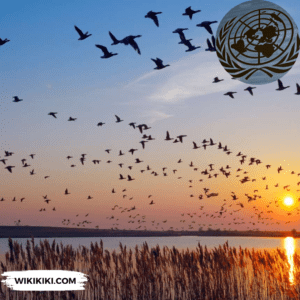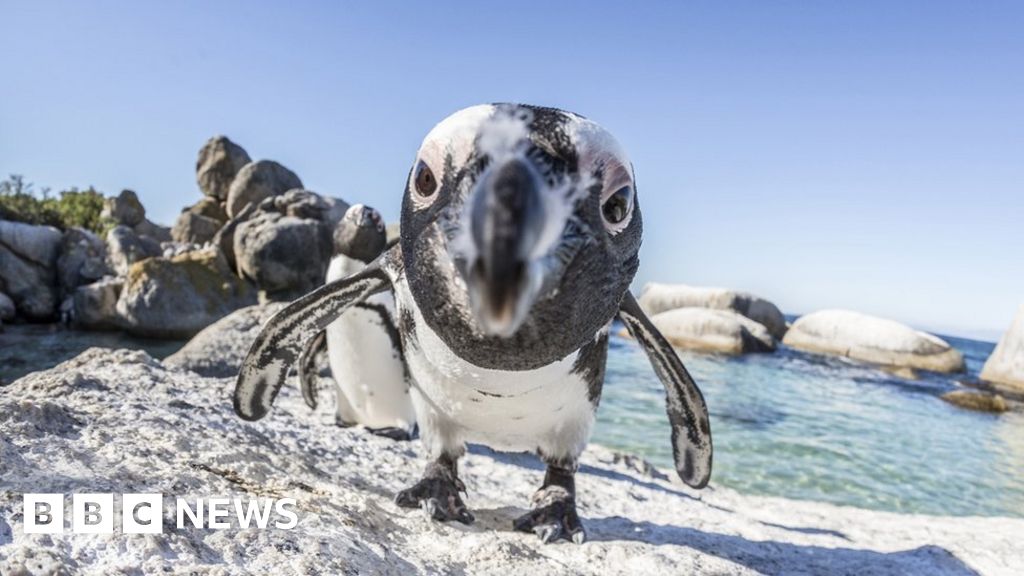A recent report released by the United Nations reveals that over 20% of the world’s migratory species are on the brink of extinction. These species, ranging from African elephants to sea turtles, undertake journeys across continents, facing numerous challenges along the way.

Also Read: Philippines: 68 Dead After Landslide Buries Gold Mining Village
The report, which shows the status of 1,189 species protected under a 1979 UN convention dedicated to the conservation of migratory animals.
Shockingly, 44% of these species have experienced population declines, with up to 22% facing the possibility of complete disappearance.
Human activities, including unsustainable hunting, fishing, and exploitation, impact 70% of the listed species.
One of the most pressing concerns showed in the report is the effects of climate change on migratory species.
Climate change alters migration timing, causes heat stress, and leads to extreme weather events, such as droughts and wildfires.
Amy Fraenkel, the executive secretary of the UN Convention on the Conservation of Migratory Species of Wild Animals, tells the urgency for governments to act on the report’s recommendations.
The report, a first-of-its-kind assessment under the auspices of the UN Convention on the Conservation of Migratory Species of Wild Animals (CMS), goes into the plight of 1,189 species protected under this 1979 treaty.
It reveals a reality: 44% of these species have experienced population declines, with a 22% facing extinction. The situation is dire for certain groups, with a 97% of fish listed under the convention at risk.
Also Read: World First Time Surpasses 1.5°C Warming Limit Over 12 Month Period
Unsustainable hunting, habitat destruction, pollution, and climate change have pushed these species to the edge.
From the Mediterranean, where millions of birds fall victim to illegal killing, to the destruction of habitats by agriculture and urbanization, the threats are manifold and pervasive.
The report shows the impact of climate change, existing threats and migration patterns. Rising temperatures alter seasonal conditions, affecting breeding and feeding grounds. For species like sea turtles, whose sex is determined by temperature, this poses an existential threat.
Success stories, such as the rebound of bird populations in Cyprus and the recovery of the Saiga Antelope in Kazakhstan, show that concerted conservation efforts can yield positive outcomes.
The report outlines a series of recommendations to address the crisis. Strengthening efforts to combat illegal wildlife trade, expanding protected areas, and mitigating the impacts of climate change feature.
Moreover, it calls for concerted international cooperation, recognizing that migratory species traverse national boundaries.
As delegates gather for the CMS COP14 in Samarkand, Uzbekistan, the urgency of the situation cannot be overstated. Governments, wildlife organizations, and scientists must heed the report’s call to action.
Also Read: European Union Unveils 2040 Climate Target, Amid Farmers Protests
The report says that the interconnectedness of ecosystems and the necessity for governments to consider the ecological impact of infrastructure projects such as dams and wind turbines.
Habitat loss, affecting three-quarters of the species, underlines the need for protected areas and corridors to ensure the survival of migratory species.
During the convention’s triennial meeting in Samarkand, Uzbekistan, delegates will review additional species for inclusion on the watchlist, recognizing the urgent need for global cooperation to protect habitats and migration paths. A new initiative will provide technical support to countries to better protect these areas.
Conservationists are urging governments to fulfill their commitments made under the 2022 global biodiversity agreement, which includes designating 30% of the world’s land and sea territories for nature by 2030.
This target is essential to mitigate the threats facing migratory species and preserve the balance of ecosystems worldwide.
The decline of migratory species is a conservation issue but also a global concern with problems for food security and human well-being.
These species are important in maintaining ecosystem health, pollinating plants, controlling pests, and supporting livelihoods.
Also Read: California Storm: 3 Dead in Historic California Rain Event





















